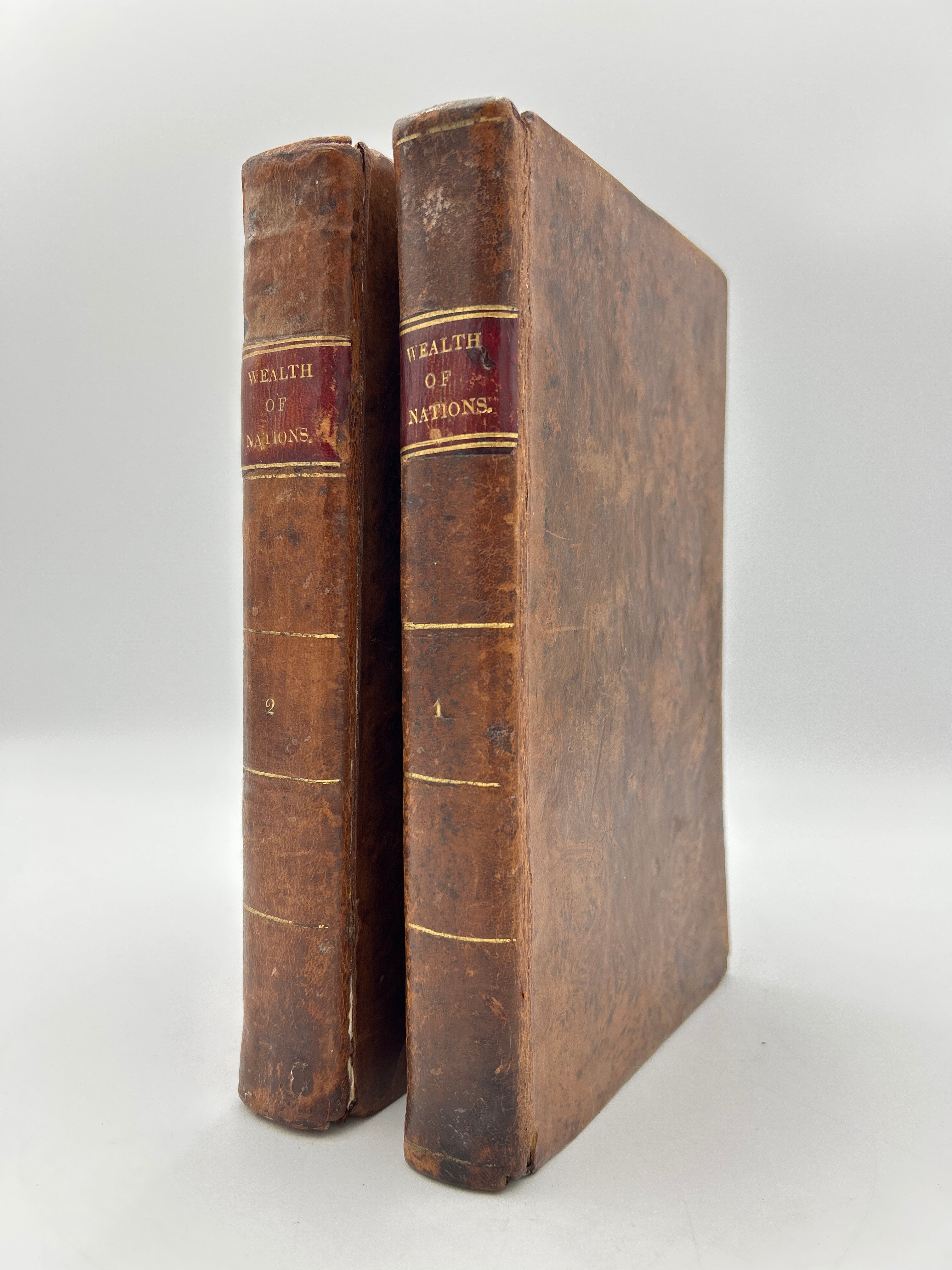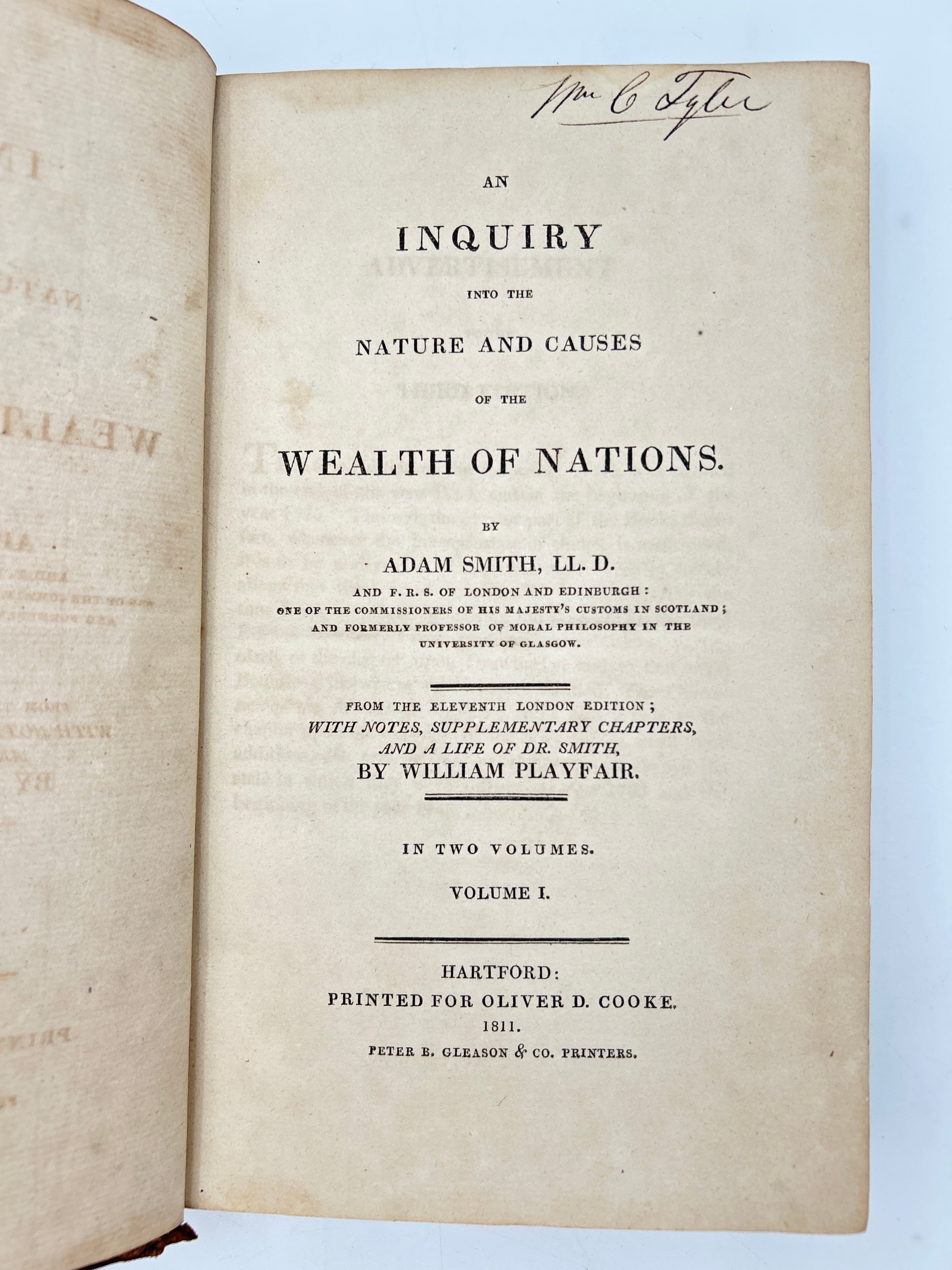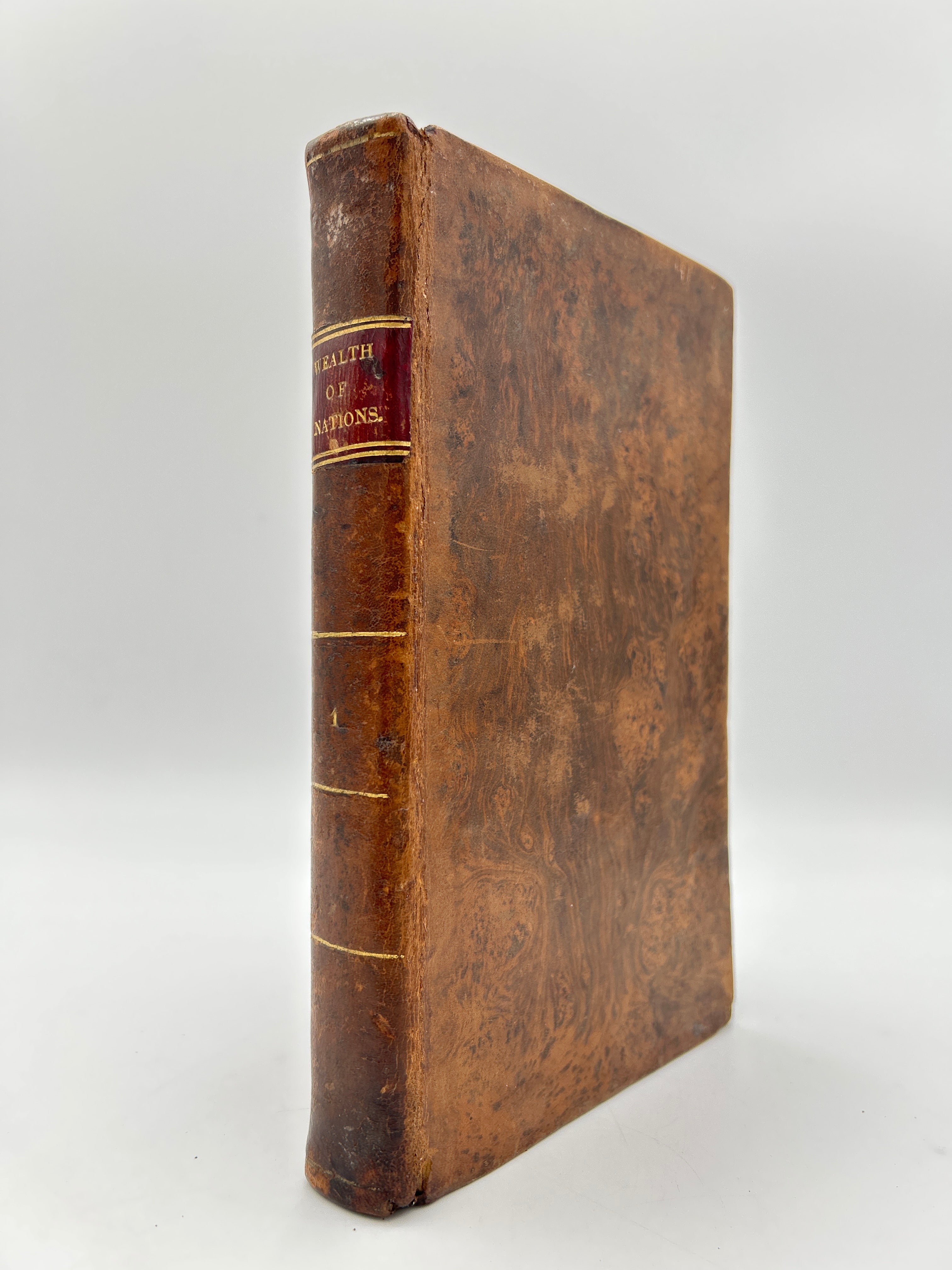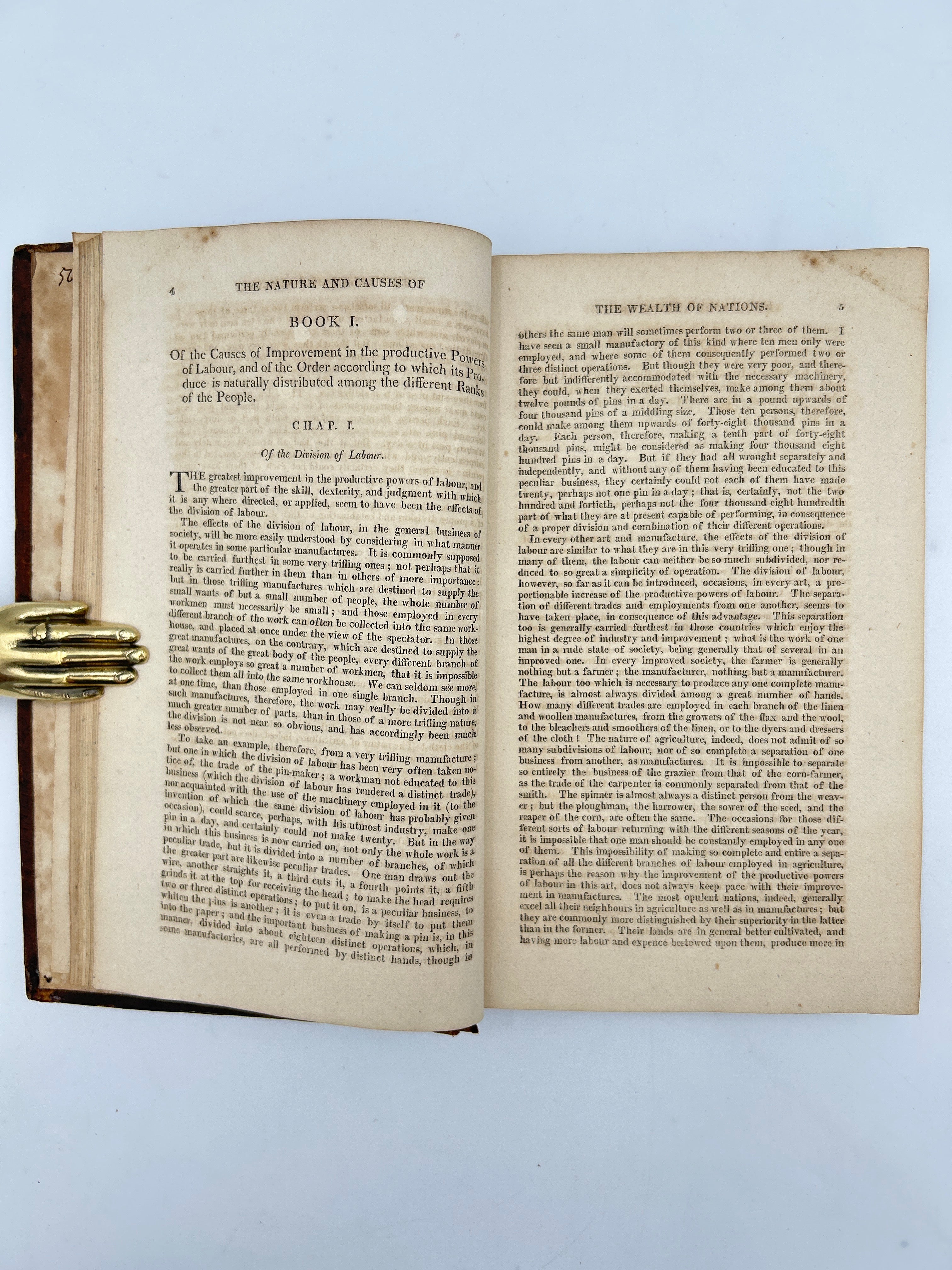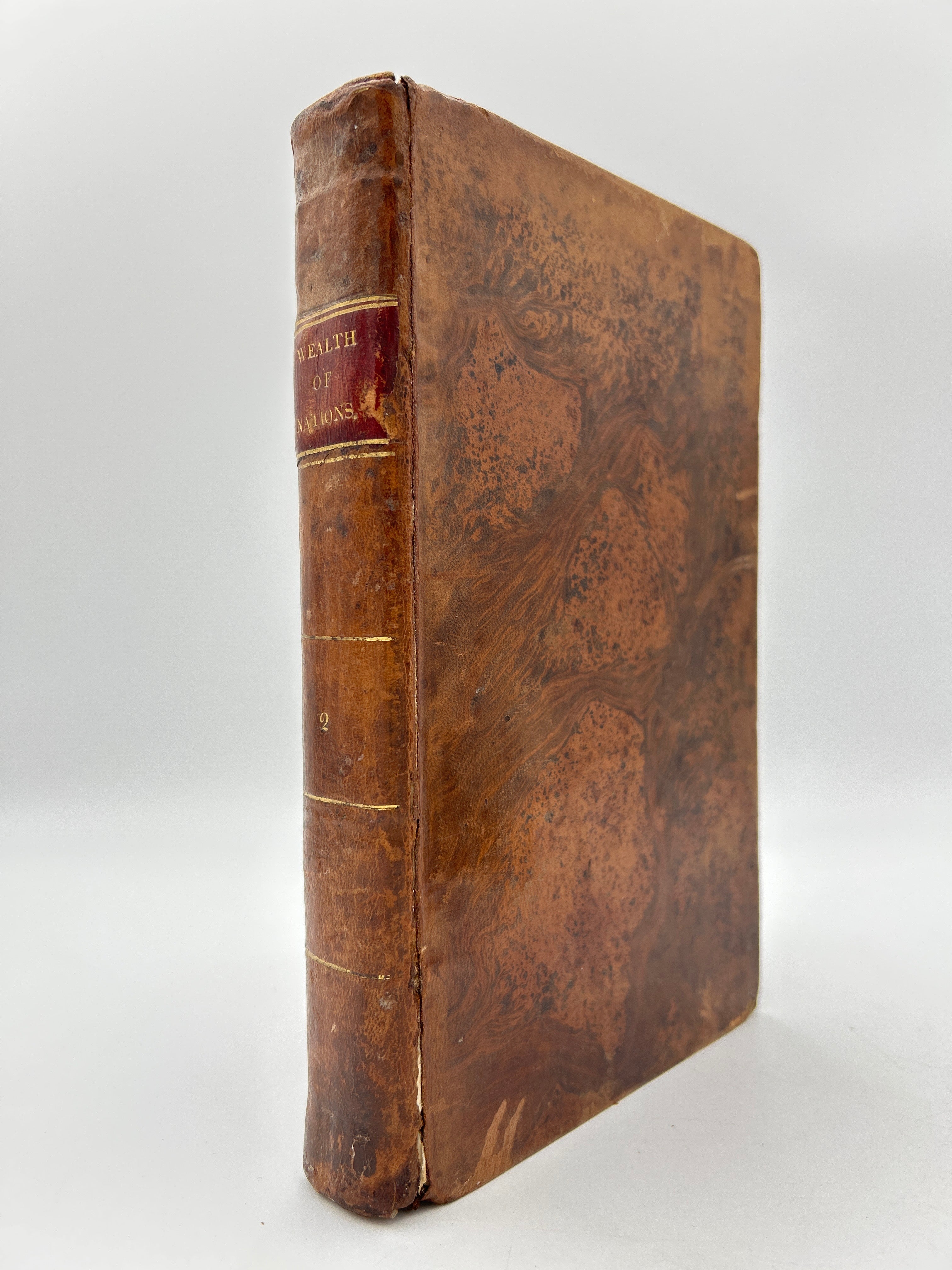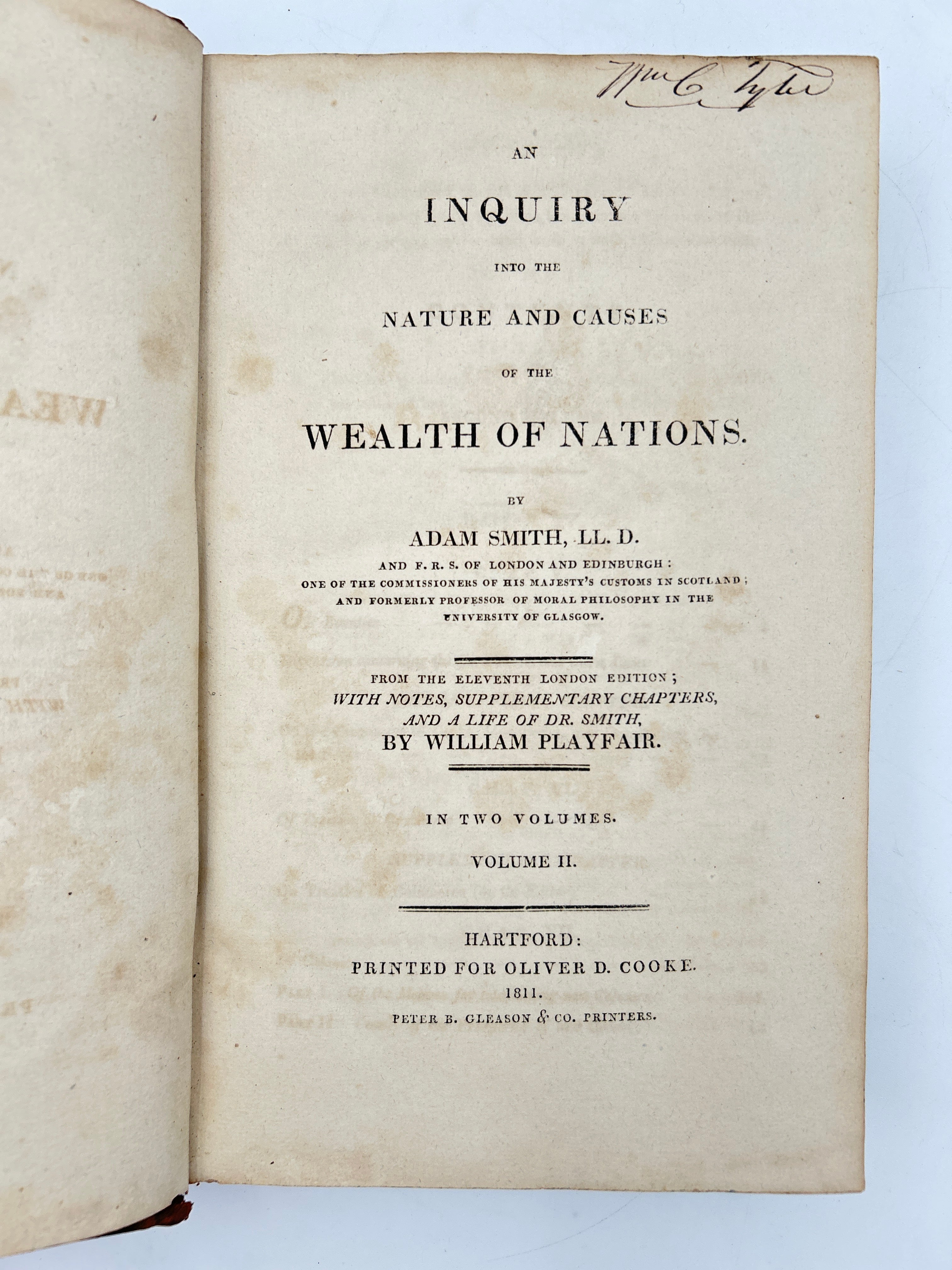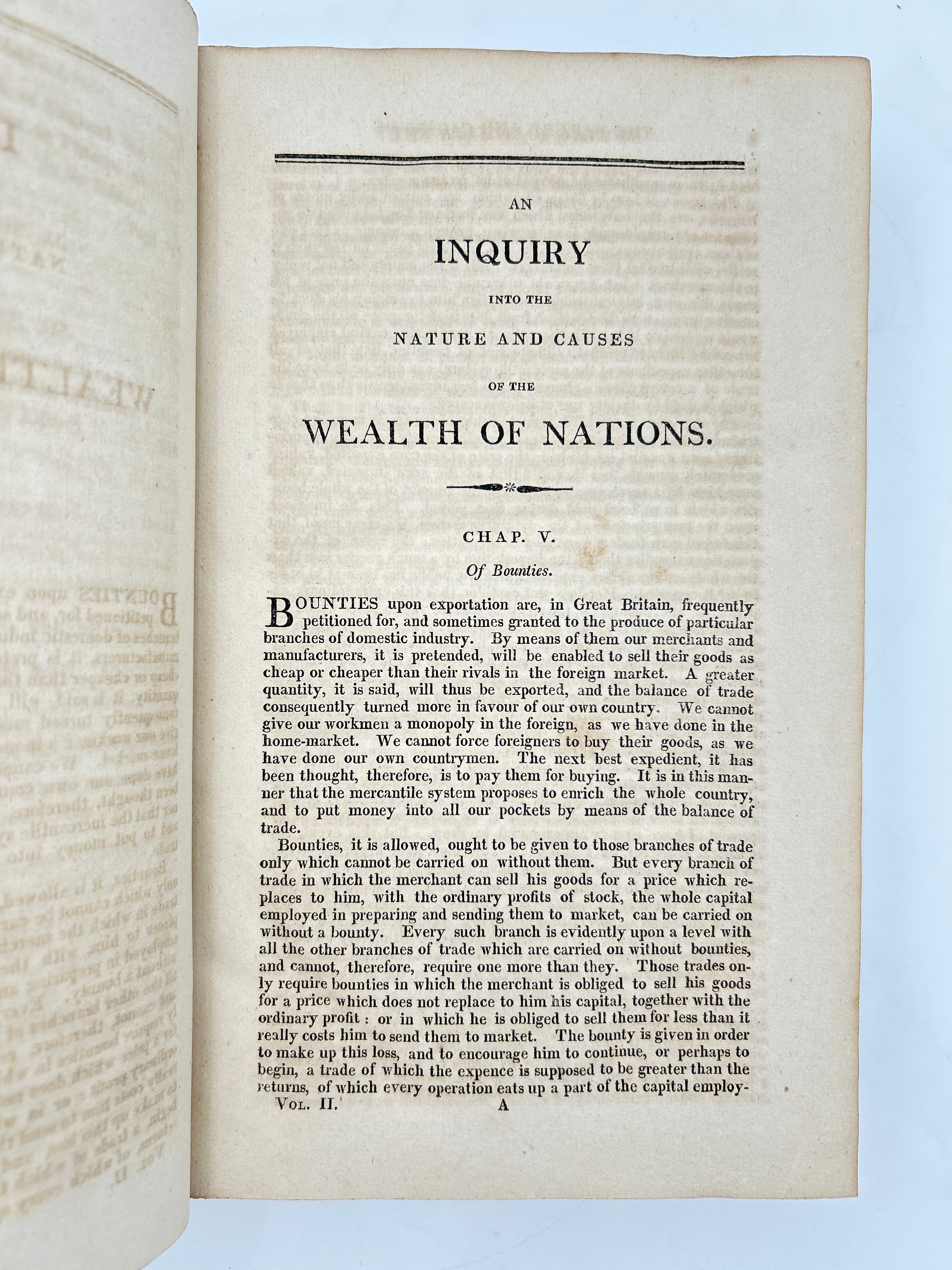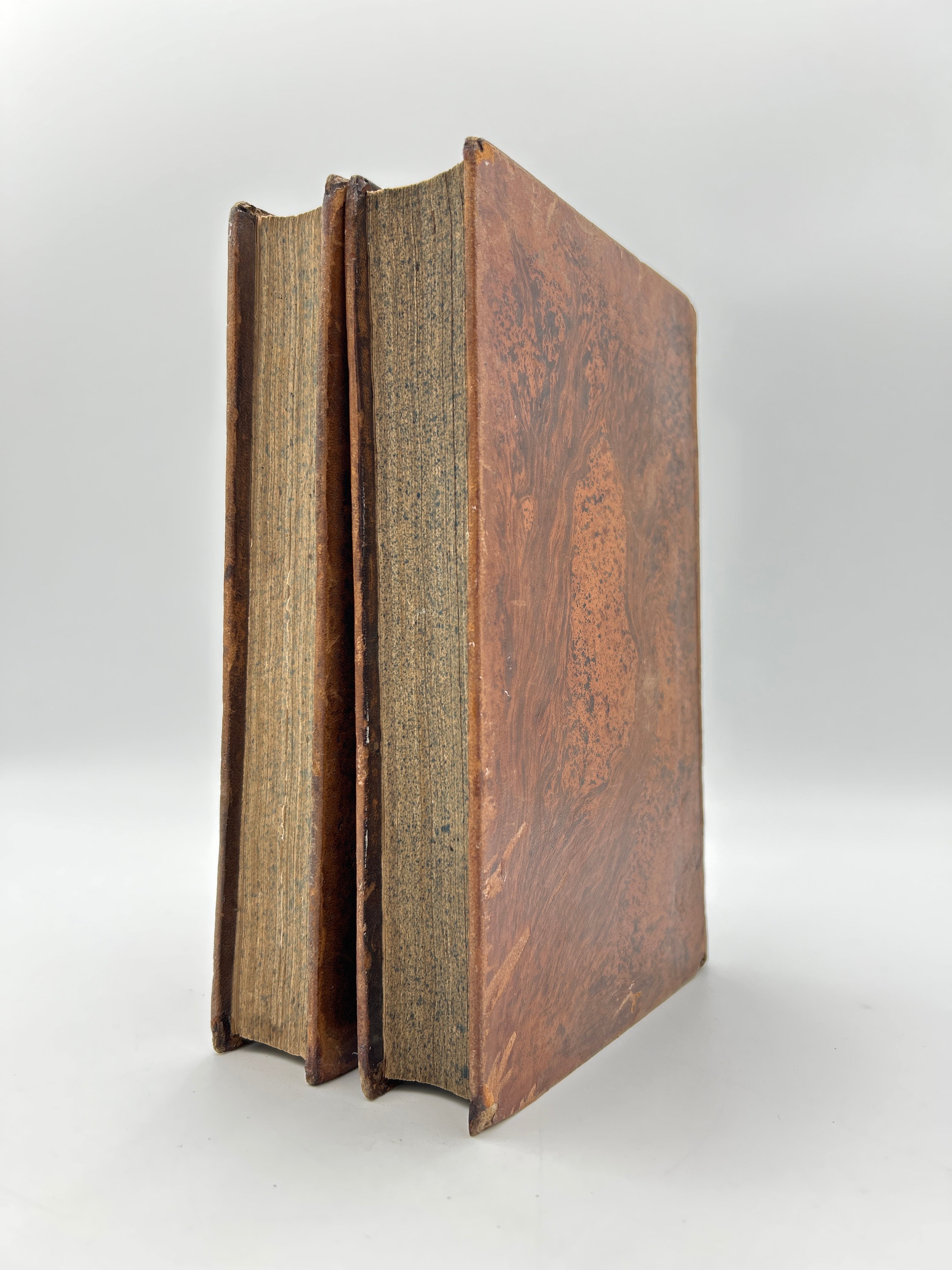Wealth of Nations In Two Volumes
Couldn't load pickup availability
5b Adam Smith. Hartford, 1811.
Notes
An Inquiry into the Nature and Causes of the Wealth of Nations (1776) by Adam Smith is one of the foundational texts of modern economics. The book examines how nations build and sustain economic prosperity through production, trade, and individual enterprise. Smith introduces key concepts such as the division of labor, the “invisible hand” of the market, and the importance of free markets driven by self-interest and competition rather than government control. Written during the rise of industrialization, it lays out how economic systems evolve naturally when individuals are allowed to pursue their own goals within fair and open markets.
The Wealth of Nations revolutionized economic thought and remains one of the most influential works ever written on political economy. It provided the intellectual foundation for capitalism and inspired policymakers during the Industrial Revolution and beyond. Smith’s argument for limited government interference—focused instead on education, defense, and justice—shaped Western economic philosophy for centuries. His ideas also encouraged shifts away from mercantilism and toward global trade and economic freedom, influencing economists and world leaders from the Enlightenment to the present day.
Adam Smith (1723–1790) was a Scottish philosopher, moral theorist, and economist, born in Kirkcaldy, Scotland. A key figure of the Scottish Enlightenment, Smith studied at the Universities of Glasgow and Oxford and later became a professor of moral philosophy. Before The Wealth of Nations, he wrote The Theory of Moral Sentiments (1759), exploring human empathy and ethical behavior. Smith saw economics as an extension of moral philosophy—believing that individual ambition, when guided by social conscience, could lead to collective good. Reclusive and modest in temperament, he lived quietly in Edinburgh, but his ideas profoundly shaped modern understanding of markets, human behavior, and society.
Description
Tree calf leather binding with gilt bands on spine and gilt lettering on red leather label to spine. Blue speckled edges. Some foxing throughout. Some wear along hinges and bumped corners. Very good condition.
